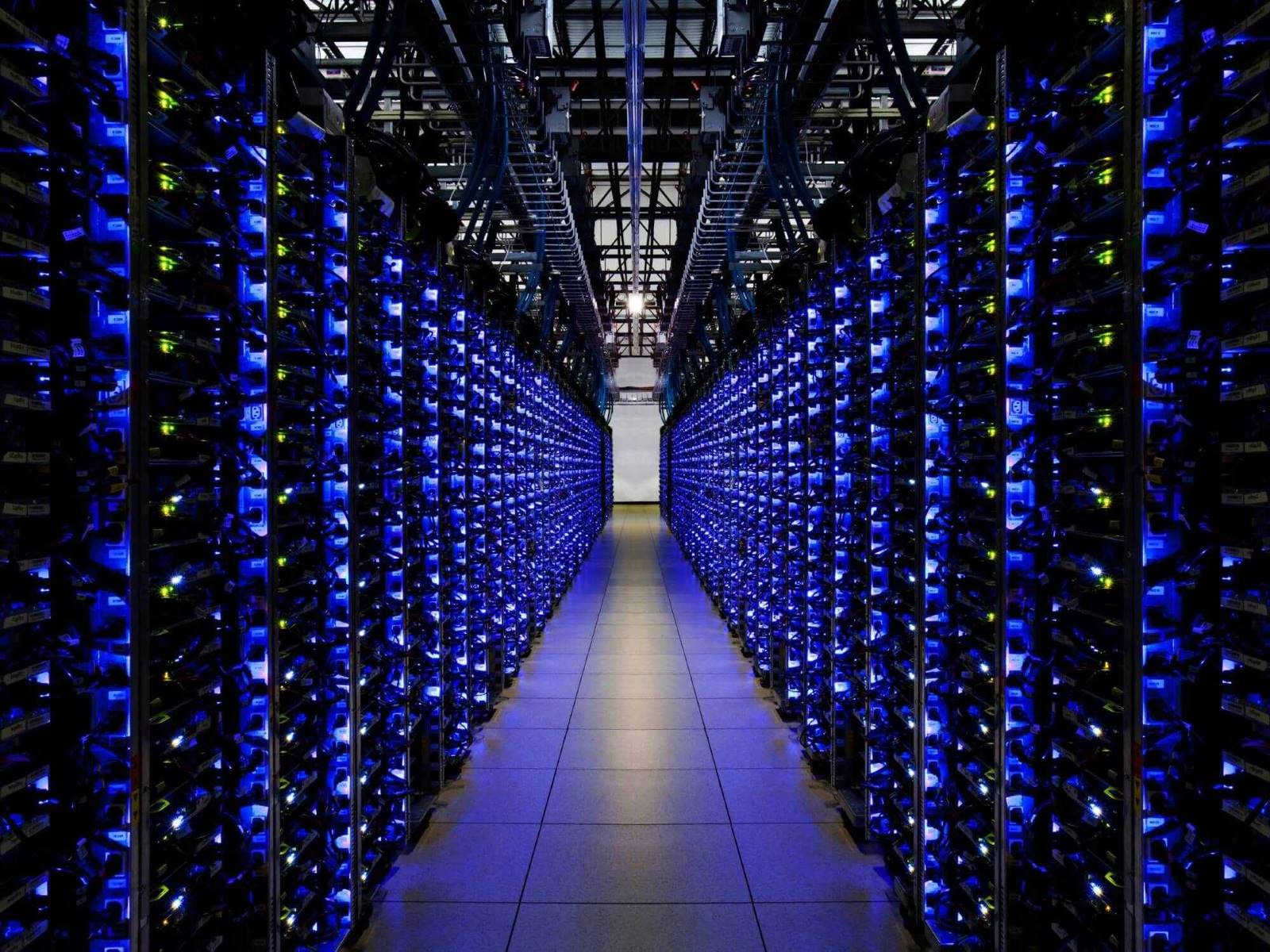Benefits of IoT in the Datacenter
With the rise of the Internet of Things (IoT), datacenters have become more intelligent, connected, and efficient. The integration of IoT devices and technologies in the datacenter environment has brought numerous benefits that enhance its functionality and performance. Here are some of the key advantages of incorporating IoT in datacenters:
- Improved Monitoring and Maintenance: IoT sensors and devices enable real-time monitoring of datacenter infrastructure, such as temperature, humidity, power consumption, and equipment health. This allows for proactive maintenance and timely detection of potential issues, minimizing downtime and improving overall reliability.
- Optimized Resource Allocation: IoT data collected from various devices and systems within the datacenter, such as servers, storage, and networking equipment, can provide valuable insights for optimizing resource allocation. This allows datacenter operators to efficiently allocate computing resources, storage capacity, and network bandwidth based on actual usage patterns and demands.
- Enhanced Energy Efficiency: The implementation of IoT in datacenters enables intelligent power management and energy efficiency optimization. For instance, IoT devices can monitor the energy consumption of individual servers and automatically adjust their power settings based on workload demands, ensuring that resources are utilized efficiently and minimizing unnecessary energy wastage.
- Streamlined Operations and Automation: IoT technology enables the automation of routine tasks and processes within the datacenter environment. This includes automated provisioning of resources, managing workload distribution, and performing system updates and patches. By reducing manual intervention, IoT-powered automation improves operational efficiency and reduces the risk of human error.
- Advanced Analytics and Predictive Maintenance: The large volumes of data collected from IoT sensors and devices can be analyzed using advanced analytics techniques to gain valuable insights. This data-driven approach facilitates predictive maintenance, where potential equipment failures can be detected early, allowing for proactive maintenance and minimizing disruptive failures.
- Improved Security and Threat Detection: IoT devices can enhance the security posture of datacenters by providing continuous monitoring and detection of security threats. By analyzing data from IoT sensors, anomalies, and potential risks can be identified, enabling prompt action to mitigate security breaches and safeguard critical data and systems.
The integration of IoT in datacenters brings significant advantages, from improved monitoring and maintenance to enhanced resource allocation and energy efficiency. As the IoT landscape continues to evolve, datacenters will continue to leverage its benefits to meet the demands of increasingly connected and data-driven environments.
The Role of Connectivity in IoT and Datacenters
Connectivity is at the heart of the Internet of Things (IoT) and plays a critical role in the functioning of datacenters. The seamless and reliable connection between IoT devices and the datacenter infrastructure is essential for capturing, transmitting, and analyzing data in real-time. Let’s explore the significance of connectivity in IoT-enabled datacenters:
Efficient Data Transmission: The datacenter serves as the central hub for collecting and processing data from various IoT devices. Fast and reliable connectivity ensures efficient and real-time data transmission between devices and the datacenter. This enables the rapid collection and analysis of data, resulting in timely decision-making and enhanced operational efficiency.
Scalability and Flexibility: Connectivity in IoT datacenters allows for seamless scalability and flexibility. As the number of IoT devices and the volume of data they generate grow, the datacenter infrastructure must be able to handle the increased workload. With reliable connectivity, datacenters can easily accommodate expanding networks and adapt to changing business needs, ensuring uninterrupted service delivery.
Edge Computing: Connectivity is crucial for enabling edge computing in IoT datacenters. Edge computing involves processing and analyzing data at the network edge, closer to the source, rather than sending it to the centralized datacenter. This reduces latency, improves response times, and enhances overall system performance. Reliable connectivity ensures that edge devices can communicate with the datacenter, allowing for efficient and seamless data transfer.
Data Security and Privacy: Connectivity plays a vital role in bolstering data security in IoT-enabled datacenters. Secure connections between devices, datacenter infrastructure, and cloud services are essential to protect sensitive data from unauthorized access or malicious activities. Robust connectivity solutions, such as encrypted communication protocols and secure network connections, are crucial for ensuring the integrity and confidentiality of data within the datacenter ecosystem.
Remote Management and Control: Connectivity enables remote management and control of IoT devices and systems in the datacenter environment. Administrators can monitor and control operations, configure devices, and perform updates remotely, regardless of their physical location. This level of remote accessibility simplifies administrative tasks, reduces costs, and improves overall efficiency.
The role of connectivity in IoT datacenters cannot be overstated. It forms the foundation of efficient data transmission, scalability, edge computing, data security, and remote management. As the IoT landscape continues to advance, the need for reliable, high-speed, and secure connectivity in datacenters will only grow stronger, enabling organizations to fully harness the potential of IoT for better business outcomes.
Data Collection and Analysis in IoT-Enabled Datacenters
In the era of the Internet of Things (IoT), datacenters have evolved into highly connected environments capable of collecting and analyzing massive amounts of data. The integration of IoT devices and technologies in datacenters enables efficient data collection and analysis, leading to valuable insights and informed decision-making. Let’s explore the importance of data collection and analysis in IoT-enabled datacenters:
Real-Time Data Capture: IoT devices within datacenters continuously generate streams of data, capturing information about temperature, power usage, network traffic, and more. This real-time data capture allows datacenter operators to monitor the health and performance of critical infrastructure components, detect anomalies, and identify potential issues that might impact operational efficiency.
Data Aggregation and Integration: In an IoT-enabled datacenter, data is collected from various devices and systems, including servers, switches, storage arrays, and environmental sensors. These diverse sources of data are aggregated and integrated to provide a holistic view of the datacenter’s performance and operations. By combining data from different sources, datacenter operators can identify correlations and patterns, gain comprehensive insights, and make informed decisions.
Advanced Analytics for Optimization: The availability of vast amounts of data in IoT-enabled datacenters allows for advanced analytics techniques to be applied. Machine learning algorithms and statistical models can be leveraged to analyze historical and real-time data, uncover hidden patterns, and predict future trends. These insights help optimize resource allocation, improve operational efficiency, and identify opportunities for performance enhancements.
Predictive Maintenance: Data analysis in IoT-enabled datacenters allows for the implementation of predictive maintenance strategies. By monitoring data patterns over time, anomalies and deviations from normal operating conditions can be detected. Predictive maintenance algorithms can identify potential equipment failures before they happen, enabling proactive maintenance and minimizing unplanned downtime.
Capacity Planning: Accurate data collection and analysis in IoT-enabled datacenters support effective capacity planning. By understanding current resource utilization and future demand trends, datacenter operators can make informed decisions regarding infrastructure upgrades, hardware provisioning, and scalability requirements. This proactive approach ensures that datacenters can efficiently meet the increasing demands of data storage and processing.
Resource Optimization: Data collection and analysis in IoT-enabled datacenters improve resource utilization and optimization. By analyzing data on power consumption, cooling efficiency, and workload distribution, datacenter operators can identify areas of inefficiency and implement targeted optimizations. This leads to energy savings, reduced costs, and improved overall sustainability.
The effective collection and analysis of data in IoT-enabled datacenters empower organizations with valuable insights to optimize their operations, proactively maintain infrastructure, and make data-driven decisions. As datacenters continue to evolve with the advancement of IoT, the role of data collection and analysis will become increasingly critical in driving efficiency, performance, and business success.
Security Challenges in the IoT-Driven Datacenter
While the Internet of Things (IoT) brings numerous benefits to datacenters, it also introduces a myriad of security challenges. The proliferation of IoT devices within datacenters expands the attack surface and increases the complexity of securing the infrastructure. Let’s explore some of the key security challenges faced in an IoT-driven datacenter environment:
Device Vulnerabilities: IoT devices often have limited computational power and memory, making them susceptible to security vulnerabilities. Manufacturers may not prioritize implementing robust security measures, leaving devices vulnerable to attacks. Weak default passwords, lack of firmware updates, and insufficient encryption can all be exploited by malicious actors to gain unauthorized access to the datacenter.
Network Segmentation: IoT devices typically connect to the datacenter network, creating a challenge in network segmentation. Segregation of IoT devices from critical infrastructure is essential to limit the potential impact of a compromised device. Implementing a robust network segmentation strategy ensures that a breach on an IoT device does not lead to unauthorized access to sensitive data or control of critical systems.
Data Privacy: The vast amount of data generated by IoT devices in datacenters raises concerns about data privacy. This data can include sensitive, personally identifiable information (PII) or intellectual property. Secure data handling and encryption measures must be implemented to protect the privacy of this data and comply with relevant data protection regulations.
Authentication and Access Control: Managing authentication and access control for a large number of IoT devices poses a significant challenge. Each device must have a unique identifier, strong authentication mechanisms, and proper access control measures in place to ensure that only authorized devices and users can access the datacenter infrastructure and services.
Data Integrity and Tampering: Ensuring the integrity of data collected from IoT devices is crucial. Unauthorized tampering or alteration of data can lead to misleading insights or compromised operations. Implementing measures such as data encryption, secure communication protocols, and data integrity checks can help safeguard the integrity and trustworthiness of the data.
Ongoing Patching and Updates: Keeping IoT devices up to date with the latest firmware patches and security updates can be challenging. Many IoT devices lack automated update mechanisms or require manual intervention, making it difficult to ensure timely patching. Regular patch management practices should be established to address vulnerabilities, mitigate risks, and protect the datacenter infrastructure.
Threat Detection and Incident Response: The dynamic nature of IoT devices and their vast number make threat detection and incident response more challenging. Implementing robust monitoring systems, intrusion detection systems, and security information and event management (SIEM) solutions can help detect and respond to security incidents in a timely manner, limiting the potential impact on the datacenter.
Employee Awareness and Training: The human factor plays a crucial role in datacenter security. Employees must be educated and trained on IoT security best practices, including device management, password security, and identifying potential security threats. Regular awareness programs and training sessions can help mitigate insider threats and strengthen the overall security posture of the datacenter.
To address the security challenges in IoT-driven datacenters, a comprehensive approach combining secure device provisioning, network segmentation, data encryption, access control measures, ongoing updates, and employee education is required. By implementing robust security measures, datacenters can mitigate the risks associated with the integration of IoT devices and ensure the continued protection of their critical assets and data.
Scalability and Flexibility in IoT-Connected Datacenters
The integration of Internet of Things (IoT) devices in datacenters brings unprecedented levels of scalability and flexibility to the infrastructure. IoT-connected datacenters are capable of dynamically adapting to changing demands and scaling their resources to accommodate evolving business needs. Let’s explore the significance of scalability and flexibility in IoT-connected datacenters:
Elastic Resource Provisioning: IoT-connected datacenters have the ability to scale their computing resources, storage capacity, and network bandwidth in response to workload demands. With the help of IoT sensors and data analytics, datacenters can accurately predict future resource requirements, allowing for efficient resource provisioning and optimal utilization. This elasticity ensures that datacenters can seamlessly handle variations in data volume, processing requirements, and user traffic.
Rapid Deployment of IoT Devices: Scalability and flexibility enable datacenters to accommodate the rapid deployment of IoT devices. As new devices are connected to the network, the datacenter infrastructure can dynamically allocate resources to support their connectivity and data processing needs. This agility in deployment enables datacenters to quickly adapt to changing business requirements and integrate new IoT technologies without significant disruptions.
Support for Massive Data Volumes: IoT generates vast amounts of data, and datacenters must be capable of efficiently handling this data influx. Scalable storage solutions, such as distributed file systems and object storage, enable datacenters to store and manage large datasets. Additionally, flexible data processing systems, such as distributed computing frameworks and parallel processing, expedite data analysis and derive actionable insights from the massive data volumes generated by IoT devices.
Dynamic Workload Distribution: IoT-connected datacenters can dynamically distribute workloads across the infrastructure based on resource availability and performance requirements. This ensures that computing resources are efficiently utilized and workloads are processed in a timely manner. Load balancing mechanisms, automated scaling, and workload orchestration systems enable seamless workload distribution, optimizing datacenter performance and responsiveness.
Adaptability to Business Demands: Scalability and flexibility empower datacenters to adapt to changing business demands. Whether it’s a sudden spike in user traffic or a shift in operational priorities, IoT-connected datacenters can quickly adjust their resources to meet the evolving needs of the organization. This agility allows businesses to scale their operations, launch new services, and respond to market opportunities in a timely manner.
Interoperability and Vendor Neutrality: Scalable and flexible datacenters prioritize interoperability and vendor neutrality. They leverage open standards and technologies that facilitate communication and collaboration between diverse IoT devices and systems. This promotes flexibility in choosing hardware and software components, enabling datacenters to select the most suitable and cost-effective solutions without being locked into specific vendors or technologies.
The combination of scalability and flexibility in IoT-connected datacenters ensures that organizations can effectively leverage the potential of IoT technologies while maintaining the agility and responsiveness required to thrive in today’s dynamic business landscape. By embracing scalable infrastructure and flexible resource allocation, datacenters can meet the growing demands of IoT, support innovation, and remain competitive in a rapidly evolving digital world.
Edge Computing and the Future of Datacenters
In recent years, the emergence of edge computing has brought significant changes to the traditional datacenter landscape. Edge computing, which involves processing and analyzing data closer to the source, offers numerous benefits and has the potential to transform the future of datacenters. Let’s explore the importance of edge computing and its impact on the datacenter industry:
Near-Real-Time Response: Edge computing enables data processing and analysis at the network edge, closer to where the data is generated. This drastically reduces the latency experienced when sending data to a centralized datacenter for processing. Near-real-time response is critical for applications that require instant decision-making, such as autonomous vehicles, industrial automation, and remote monitoring systems.
Bandwidth Optimization: By processing data at the edge, edge computing reduces the need for sending vast amounts of raw data to the centralized datacenter for analysis. Instead, only summarized or relevant data is transmitted, resulting in significant bandwidth savings. This optimization of network traffic improves efficiency, reduces congestion, and minimizes the strain on datacenter resources.
Data Security and Privacy: Edge computing mitigates security and privacy risks associated with transmitting sensitive data to remote datacenters. Instead of transferring data across long distances, sensitive information can be processed and analyzed locally, reducing the exposure to potential security breaches. This enhances data privacy and helps organizations comply with regulations regarding data sovereignty and protection.
Decentralized Data Processing: Edge computing distributes data processing capabilities across multiple edge nodes, eliminating dependence on a single central datacenter. This decentralized approach improves fault tolerance and resiliency, as failures in individual nodes have minimal impact on the overall system. It also reduces the risk of data loss due to network connectivity issues or natural disasters affecting a single location.
Reduced Latency and Improved User Experience: Edge computing significantly reduces the latency between data generation and processing. This leads to improved user experiences, especially for applications that require low-latency interactions, such as augmented reality, virtual reality, and real-time analytics. Faster response times enable smoother interactions, enhancing user satisfaction and enabling more immersive and responsive applications.
Efficient Use of Network Resources: Edge computing optimizes the use of network resources by performing data processing and analysis at the edge. This offloads the datacenter’s computational workload, reducing the strain on the central infrastructure. By distributing processing tasks to edge nodes, datacenters can allocate their resources more efficiently and effectively, ensuring optimal utilization and cost savings.
Scalability and Redundancy: The distributed nature of edge computing allows for easy scalability and redundancy. Edge nodes can be easily added or scaled based on the demands of the edge applications. This scalability provides the flexibility to expand computing resources closer to where they are needed, ensuring that the infrastructure can keep up with the increasing demands of IoT and emerging technologies.
The integration of edge computing into the datacenter ecosystem marks an exciting development in the evolution of datacenters. By bringing processing capabilities closer to the data source, edge computing improves response times, optimizes network resources, enhances security and privacy, and enables new and innovative applications. The future of datacenters lies in a hybrid approach that combines the strengths of both traditional centralized datacenters and distributed edge computing, providing organizations with a powerful and comprehensive infrastructure to support the ever-growing demands of the digital age.
Impact of IoT on Energy Efficiency in Datacenters
The integration of the Internet of Things (IoT) in datacenters has had a significant impact on energy efficiency. IoT devices and technologies provide datacenters with valuable insights into energy consumption patterns, enabling them to optimize resource usage, reduce energy waste, and improve overall sustainability. Let’s explore the key ways in which IoT has influenced energy efficiency in datacenters:
Real-Time Monitoring and Control: IoT sensors and devices allow for real-time monitoring of energy consumption within datacenters. By collecting data on power usage, temperature, lighting, and cooling, operators can identify areas of inefficiency and implement measures to reduce energy consumption. Additionally, IoT-enabled control systems enable automated adjustments to power settings, cooling levels, and lighting conditions based on real-time data, further optimizing energy usage.
Precision Cooling and Thermal Management: The granular data collected by IoT sensors in datacenters helps optimize cooling and thermal management systems. By analyzing temperature data at various points within the datacenter, operators can adjust cooling mechanisms to match the actual heat load, eliminating unnecessary cooling and reducing energy consumption. This precision cooling approach improves energy efficiency and reduces infrastructure costs.
Dynamic Workload Management: IoT data allows datacenters to analyze workload patterns and dynamically allocate computing resources. By understanding peak usage periods, datacenters can optimize the provisioning of servers, consolidating workloads and shutting down underutilized resources during low-demand periods. This dynamic workload management reduces energy consumption by ensuring that resources are allocated efficiently and used only when necessary.
Predictive Analytics for Energy Optimization: IoT data combined with predictive analytics enables datacenters to optimize energy usage through advanced planning and forecasting. By analyzing historical data and identifying usage trends, predictive analytics models can determine the most energy-efficient configurations, schedules, and power management strategies for datacenter operations. This proactive approach minimizes energy waste and ensures that energy resources are utilized intelligently.
Energy-Aware Device Management: IoT devices in datacenters can be programmed to operate in energy-saving modes when not in active use. For example, servers can automatically power down or adjust their energy consumption levels during periods of low demand. Additionally, IoT devices can provide alerts and recommendations for energy-saving actions, such as powering off idle equipment or optimizing cooling conditions, further enhancing energy efficiency.
Renewable Energy Integration: IoT technology can facilitate the integration of renewable energy sources into datacenters. By monitoring energy production from renewable sources, such as solar panels or wind turbines, in real-time, datacenters can dynamically adjust energy usage based on the availability and cost-effectiveness of renewable energy. This integration reduces reliance on traditional energy sources, lowers carbon emissions, and enhances sustainability.
The IoT’s impact on energy efficiency in datacenters is significant, providing opportunities for real-time monitoring, precision cooling, workload optimization, predictive analytics, energy-aware device management, and renewable energy integration. By leveraging IoT technologies effectively, datacenters can reduce their environmental footprint, optimize energy usage, and contribute to a greener and more sustainable future.





